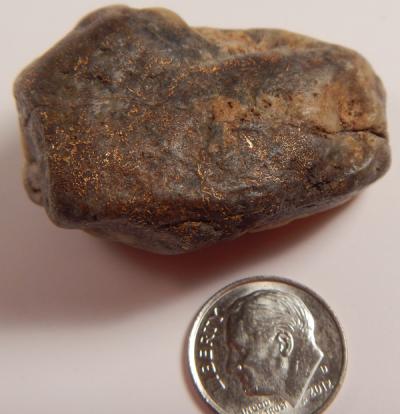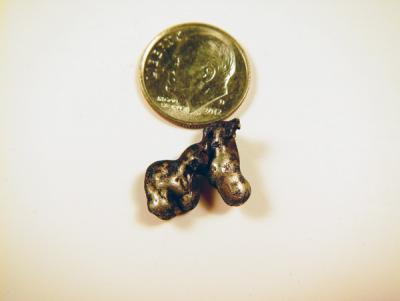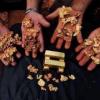Search the Community
Showing results for tags 'detector review'.
-
I am primarily a prospector but have also been coin and jewelry detecting since 1972. Like most people when in parks I use discrimination to pick targets but when prospecting I usually dig it all. Not always though, sometimes I am tired or an area is just too trashy so I crank in a little VLF discrimination to sort things out. The problem is when prospecting I have seen some pretty scary things. It is one thing to walk away from a dime because your detector called it a nail. Think about walking away from a solid multi ounce chunk of gold because your detector called it a nail. Not likely, you say? Far too likely, I am afraid. I and others dig big nuggets other people leave behind on a regular basis, and I know I have missed some very big ones myself in the past. It gets your attention to realize you may have walked away from $40,000.00. I have this pile of detectors headed my way to check out. One, the Nokta Fors Gold, showed up yesterday. Good first impression out of the box, but that is another story. The main thing is today I got it out along with a Gold Bug 2, Gold Bug Pro, F75, White's GMT, and CTX 3030. I rounded up a 1 gram gold nugget and a collection of nails and hot rocks and did a little playing around this afternoon. I am still waiting for the XP Deus to show up and a V3i so this was more about coming up with some methodology more than anything. My interests run more towards hot rocks and magnetite sand than would be the case with most people. So the particulars do not matter at the moment, except this. Discrimination sucks! You fire these babies up in all metal and they are all powerful detectors that do the job, with some amazing depth for VLF units (not counting the CTX which lacks a true all metal mode). It is pretty easy to compare units as it really just boils down to depth and how well they handle hot rocks, which is mostly a function of frequency and ground balance. EMI is a big factor in urban areas also but much less so when prospecting. So then I put the detectors in disc mode and I just cut the legs out from under them. Bam, instant lost depth. Also, target masking or so-called reactivity is usually a non-issue in pure all metal modes. Not so at all in disc modes, and disc modes that lack true zero discrimination settings mask targets immediately even when set to zero. Anyway, all I can say is playing around for awhile with these units and my pile of hot rocks and little nails was rather disheartening. It was just so darn easy to get that little nugget to bang out loud in all metal, then disappear entirely in disc modes. Or get detected but called ferrous. Or get masked by a nearby hot rock or nail. It just hammered home with me once again the huge difference in raw power between something like a GPX 5000 and even the best VLF detectors in all metal mode, and how that huge difference becomes an almost impossibly large gulf once you turn to disc modes. When you just go detecting in a park you do not see what you are missing. But in my case it was all to visible and really kind of bummed me out seeing just how far we have to go when it comes to metal detector discrimination. The only icing on this cake is that there is a huge amount of fantastic stuff in the ground, and not deep at all. It is there, quite shallow, just under or near that thing you discriminated out. If we could see through discriminated items rather than be blocked by them an amazing amount of stuff would come to light. Beneath The Mask by Thomas Dankowski The Painful Truth by Thomas Dankowski More Reasons Discrimination Sucks by Steve Herschbach
-
I am a little overdue but just finished my latest update to Steve's Guide To Gold Nugget Detectors. The main changes: The 15 kHz Nokta FORS Gold was discontinued in January and replaced in the Nokta product lineup by the 19 kHz FORS Gold+. Dealer shelves should be empty by now so the model has been deleted from the listing. The Garrett AT Gold dropped from $679 to $639 changing its relative position on the list to a better position (best bang for buck are lower price units). At this price it is a real alternative to the Gold Bug Pro, especially for those wanting the detector to be waterproof. I fleshed out my "opinion" of the Minelab Gold Monster 1000 based on the latest information. White's discontinued the old basic White's MXT in favor of the MXT All Pro. The problem is this boosted the internet price from $729 to $823 and shifted the unit quite a bit higher in the listing. There is nothing about the added features for the extra $100 that makes the Pro a better nugget detector than the old version (though the ground grab is nice), so this ends up hurting the relative rating. At this point there are better options at lower prices and so for those looking to White's for a prospecting detector I would now lean much more heavily in favor of the $699 GMT. In theory the MX Sport at $749 is the better option than the MXT Pro but as far as I can tell the MX Sport has had no acceptance in the prospecting world, being marketing much more to the coin, jewelry and relic world. The latest ad in the ICMJ shows that White's now considers the GMT and TDI SL to be their two prospecting models. The Minelab Equinox 800 having a dedicated Prospecting Mode running at up to 40 kHz has been added to the list. Too early to know how that will shake out. I somewhat upgraded my opinion of the DEUS based on the prospecting capability added by the new HF coils, but in the end this still is a VLF detector selling for well over a thousand dollars that can find gold nuggets no better than much less expensive detectors. The main reason to own a DEUS is because you want the overall capability and like the way it is configured, not solely for its prospecting capability. I hope a HF coil as stock version is sold in the future at a much lower price. The White's TDI Pro was discontinued some time ago but I left it on the listing due to dealer stock still being available. They appear to be gone now, so this is another model retired from the list. I somewhat downgraded my opinion of the Garrett ATX based mostly on the Minelab GPX 4500 now only being a few hundred dollars more in the U.S., and actually less expensive than the ATX in Australia ($3999 ATX vs $3550 GPX 4500) Finally, my three Steve's Picks remain the same this year as the Fisher Gold Bug 2 (specialized tiny gold sniper), Fisher Gold Bug Pro (general purpose detector hot on gold), and Minelab GPX 5000 (versatile PI performance for all conditions).
-
I have too many detectors and am slowly making my way to a "thinning of the herd" this winter. This is a very informal little test I set up today for no purpose other than to see if I can sharpen my opinions about which ones stay and which ones go away. The goal is a general purpose tackle anything I might run into while wandering the hills machine. Above we have, from left to right, the Minelab Gold Monster 1000 w/10: x 5" DD, Nokta Impact w/11" x 7" DD, Teknetics G2 w/11" x 7" DD, Minelab CTX 3030 with 10" x 5" DD, Makro Gold Racer w/10" x 5" DD, Makro Gold Racer w/10" x 5" concentric, XP Deus HF 10" x 5" DD, XP Deus 11" DD And below we have a bunch of common ferrous trash on right, including some problematic items like sheet steel, bolts, etc. plus a scattering of hot rocks. There are a couple nickels, couple copper pennies, and a dime placed in the mess, one of the five in the open as a comparison. The stuff is rather randomly scattered with the coins placed so as to be hard to detect but not impossible. I am as much interested in how the hot rocks and trash responds as I am in how the coins respond. My testing is non-scientific and only intended to help me sort things out for myself, but I can offer a few observations. My criteria are my own, but do include how the detector feels on my arm and how it sounds to my ear. This session is without headphones as I often detect in quiet locations and want a detector with good, loud, clear audio as provided by an external speaker. The Gold Monster and CTX 3030 are not on the chopping block, but just for more information. The rest are all VLF type detectors and I am trying to sort out which I may be happiest swinging away in locations where I may run into hot rocks or lots of trash, while seeking non-ferrous targets. Here are some random observations, few of which are new by any means. 1. The Gold Monster excels at pulling non-ferrous items out of the hot rocks. It balances the rocks fairly well in all metal mode but this mix of intense hot rocks can be a little noisy (still way better than most machines). The iron disc setting however just shut the rocks right down and still popped on the coins. Very good. The machine fails however as a detector in dense trash. I can attest that the GM1000 does very well with scattered trash. The dense stuff however is more than the machine can handle. The high frequency helps enhance signals on flat steel in particular plus you get peculiar ghosting effects, weak signals that sound like echos of the stronger signals. So while the Gold Monster is a good nugget detector, even in scattered trash, it is not, in my opinion, a machine for pulling non-ferrous items out of classic "carpet of nails" scenarios, like old burned down cabins. 2. The Nokta Impact does extremely well overall, though the number of settings options are a plus as well as a negative. Lots of possible options to fiddle with. My main gripes are the weight/non-compact design and the odd overload signal. It is tied directly to the volume control. As you advance the volume everything gets louder, including the overload signal, until you hit 8/10ths volume. From there on up the target volume increases but the overload signal volume decreases, until at full target volume you have next to no overload signal. People who go to full volume at all times probably wonder why their detector makes no overload signal. This gets mentioned in the manual but I am sure people miss it. Even at its loudest the overload signal is very faint to my ear. Why do I care? An overload is a quick hint that you have a flat steel item like a can lid or large bolt under the coil. The Impact like other Nokta/Makro machines likes to overload on shallow targets so running sensitivity low in dense trash (39 or lower) can be advisable, and you are not going to lose depth because no machine gets any depth to speak of in dense trash. I do like the ability to adjust the ferrous volume as a separate item in the dense trash. 3. The Teknetics G2, a Gold Bug Pro variant, continues to impress me by being really simple and effective. Best speaker volume of them all, it really bangs out. However, there is no volume control at all so it can be quite the noisy machine in dense trash. 4. The CTX 3030 is amazing in its ability to just shut the trash up. If flat steel is your problem, the CTX is the answer. Almost quiet as a mouse in the trash. Unfortunately and no surprise, the CTX also suffers the worst from target masking. The CTX is superb if it has room to maneuver, but it goes almost blind in dense trash like this, and is only so-so at best when it comes to finding the targets in the hot rocks. 5. A couple Gold Racers, one early prototype and one late prototype (more or less production). At 56 kHz the Gold Racer handles the ferrous better than I would expect, but it does tend to "light up" flat steel and such and is very prone to overloading in dense trash. Again, sensitivity 39 and lower can really help. Overall however the Gold Racer holds its own with the Impact and G2, especially at picking low conductive items out of the trash. The concentric does seem to help a little with ferrous trash and hot rocks, but not so much as I hoped. No real need for most people to have the concentric coil from what I have seen. 6. The Deus is a wizard in the trash but not by the margin I expect given how popular the machine is. The 11" coil seemed on par with the other machines (the 9" is no doubt better) and the elliptical overall has the edge over all the other options. But only by a little, not a lot. Flat steel and bolts that bother other machines bother the Deus also. I tried small coils on most of the machines also. They do help getting between the trash but obviously ground coverage suffers also. That being the case I was more interested in what the stock type coils did. If I was headed for the Sierra Mountains tomorrow and wanted something light to prospect for gold with, and some ability to deal with the ever present ferrous trash left by logging operations, I would grab the Gold Monster. It bangs on gold, handles hot rocks, and can deal with normal random ferrous trash. If I thought I might bump into an old cabin or camp I wanted to hunt however, it gets to be a hair splitter. For just shutting trash up the CTX is unbeatable, but it also suffers the most from target masking. If you just want a machine that shuts up unless a good target is under the coil, hard to beat, but a lot will get missed also. Good for low to moderate trash levels but in dense trash it is going to suffer, even with a small coil. I will generally stick to parks and beach work with the CTX. I have and continue to have a hard time loving the Deus, although it is the winner in the densest trash. The external speaker volume is very poor but for me the main problem is simplicity and priorities. I dream a lot about hunting old sites with lots of trash chasing a gold coin, but the fact is it is probably the type of detecting I do least. With apologies to the relic hunters, the stuff most people show on forums like the Dankowski forum would just go in the trash at my house. Gold, silver, and platinum in all forms (nuggets, coins, jewelry), plus coins made of anything else, sums up what I detect for. If hunting dense trash was something I did constantly the Deus would be a no-brainer, but as rare as it is for me to engage in relic hunting, something like a G2 does nearly as well from what I am seeing, or at least well enough to suit me. I like the idea that if my battery goes dead I just put another battery in the G2 and back in business. No separate charging of coil, controller, and headphone. As much as I like playing with complex detectors when it gets down to my detecting I do prefer simplicity. The bottom line for the Deus is I was hoping the 14/28/74 kHz elliptical might be as good as a 19 kHz G2 and 45 kHz Gold Monster combined. The Deus has the edge in the dense trash but the Gold Monster has an even bigger edge on the gold nuggets, so having my cake and eating it also all in one detector still involves compromises in real life. For a different perspective on the Deus HF elliptical coil from a hard core relic hunter see Keith Southern's review. The GM1000 and CTX 3030 are keepers for different reasons. I have not given up on the Impact and Gold Racer by any means though between those two I still get along best with the Gold Racer for my particular purposes. The Deus is really good at what it does best. The machine that impressed me the most does so by being so simple. The two knob G2 combination of lightweight, excellent ergonomics, loud audio, and simple but effective operation make it very hard for me not to like the machine. It is not "the best" per se but the G2/Gold Bug Pro still hits a certain sweet spot for me personally. For a trip into the hills to prospect for gold but to also hunt a cabin site or old camp, it is a toss up for me at the moment as to which I would grab, the Gold Racer or the G2. Gun to head right this moment, I guess it's G2. Tough call though. Anyway, that narrowed it down a bit and gives me more directions to pursue going forward as far as what to test and how. I will finish up again by pointing out I am not trying to prove anything to anybody but some of the observations may be helpful to some people - so there you go.
-
A couple of weeks ago I was lucky enough to be offered the use of a Macro Gold Racer with an 8x4 inch coil by a prominent local metal detecting personality. His name is Julian and has the blog at www.marlboroughmetaldetecting.com where he keeps track of all his finds and such. My first outing was with the racer was a lazy Sunday trip to a spot on a local river that you can literally drive right into the river. I was with 4 other guys, one intended to snipe and the others had three different detectors between them. We spent a few hours here which saw me locate quite a number of very small lead shot targets in bedrock crevices but gold eluded me right to the end of the day when I found a tiny 0.12g flake. Initial thoughts about the detector after this outing was that it was quite hot at finding tiny targets and it was the only detector that found gold on this day. My next trip was to a somewhat more remote area that turned out a little trick to get to. I had suspicions that there might be gold in this particular waterway based on local geology and nearby discoveries. As soon as we go to the river it became apparent that the VLF detectors we had with us were not going to handle the local levels of ground mineralisation. Bedrock was a mixture of igneous rock that in some cases overloaded the detector completely. Despite the racers variety of settings to enable detecting in tougher ground I found it impossible to get it to function here. I could get it to run reasonably quiet but then I was only able to detect a half grammer at a couple of cm and the signal was far from crisp. And lucky last trip. I took the detector to a mates’ claim for a run. This spot is also in quite a public spot and myself and others have hammered it in the past. At an estimate I have taken a couple of oz’s from it in the past in the form of predominantly <0.5g nuggets. The racer ran very nicely here with sensitivity at 80 and isat at about mid-way. It didn’t take long before I started pulling tiny lead shot soon followed by a crevice that gave a weak signal. With a bit of chipping I recovered about 20 small flakes and colours to for a total of maybe 0.1g from the crevice (not in picture). The gold was all located in an area the size of a 10c coin. I was impressed at having found such small gold despite it being shallow as normally an aggregation of targets seems to be quieter than one large target of similar weigh. Or so I have found. I carried on for a couple of hours and got 6 further pieces of gold for a total of 0.2g as well as a bunch of lead. In fact, 5 of the pieces together weigh just 0.1g! So, it seems the racer is ridiculously sensitive to small gold and has plenty of scope to be manually adapted to different ground. Personally, I found the detector a bit on the “manual” side with the option of setting a lot of search parameters yourself. I know this is preferred by some and less so by others, just like manual and automatic cars I guess. I’d like to say thanks to Julian for the opportunity to let me use his Racer, especially as he didn’t know me at all. It’s always fun trying a new bit of kit.
-
What follows are "scribblings" based on my time with the White's MX Sport detector. It's lengthy, and I hope it might cast some light on this particular detector that has seen it's share of negative comment. Steve has given me permission to reproduce it here. Thank you Steve. White’s MX Sport Review A new MX Sport was received for tests but it soon transpired there was a problem/s with it and it was subsequently returned to the Factory. As soon as I heard about the MX Sport, I knew it was one detector that I really wanted to see the ‘who, why and what’ about what promised to be a gorgeous detector. This ‘report’ is based on those few days of tests before the unit was returned. In the box The MX Sport (MXS) ships in a solid and very colorful carton. It is tied in by way of clever use of ordinary cardboard. The “brains” of the unit, the control box is given special attention and is well cocooned in it’s own piece of cardboard and it’s doubtful that any damage could come to it in transit it is so well protected. The shafts are inside as well as another box containing their own branded headphones. White’s Ultralight Headphones Tucked away in a corner of the shipping container is another box containing White’s own ‘Ultralight’ headphones. The ear cups are square rather than round and I thought that rather odd but in use they proved to be comfortable and remained firmly on the head unlike the very poor Garrett Clear Sound phones that didn’t remain on the head at all even while wearing a ‘rag wool’ hat. The Ultralight’s come with a standard quarter inch jack plug and are partly curly coiled and straight cabled. Inside a separate package is a supplied headphone adaptor that enables the use of any headphone of your choosing. What you end up with is more cable than desired and you will have to find a way of keeping it from dangling all over the place. Some users have fixed the length inside the arm rest velcro strap. An optional waterproof headphone plugs straight into the MXS without the need for the adaptor. I didn’t get to test one. When plugged in the volume is set at 0 so make sure you turn this up to suit your hearing. The thing I liked about the Ultralight’s was I was able to hear signals very clearly but was also able to hear enough of what was going on around me preventing any nasty surprises. Build It’s easy to assemble and the build of the entire detector is top class and the control box is of a solid plastic and the screen is of hard transparent plastic and not the flimsy flexible membranes evident on other detectors. It’s more like one of their infamous ‘yellow’ beach PI’s than anything else as to it’s build. Compared to a CTX it has to be the bargain of the year and you could buy three MX Sport’s for what it would cost to buy a single CTX. Not every one is looking for a heavy machine with GPS functions but would still like a waterproof machine. In this regard, White’s are offering a very good package at a very reasonable asking price. I for one just can’t understand how they did it! The hand grip is solid and good to hold but there is a ‘creaking’ noise from underneath the control box area when swung but this isn’t enough to cause any problem and it becomes almost reassuring after a while as it signifies your progress. At the rear of the machine the battery pod unscrews and insert the 8 AA cells (supplied) and tighten to the purposely designated marks that align between the holder and the main body of the machine to maintain a waterproof seal. The arm rest is adjustable by way of an ordinary screwdriver. It’s supplied with the necessary arm strap because the detector is very solid and it’s more comfortable to use strapped in. The stand for the detector is small and unusually at the front of the arrangement and barely sits off the surface but as it’s waterproof is hardly an issue. Coil The coil is a 10” DD open round type and is supplied with a coil cover. On arrival I inspected the coil pour and was disheartened to see what appeared to be a poor job as the levels on the outer perimeter were uneven: too full and swollen on one half and a shallow sink on the other. The rear of the coil looked like it had received 2 to 3 separate pours and looked ugly and uneven. The coil cover is a thin one and barely clung on due to the uneven epoxy. On it’s first beach search it filled up with sand and I removed the cover and washed it all away in the bath tub. There was a lot of sand! While assembling the coil to the control box be extra careful because the pins are very thin and if aligned incorrectly they might bend and you’re then out of business if one breaks off. But once connected properly the waterproof connector is top notch. The coil cable is heavy duty, thick and pliable. It is held in place by three supplied plastic clips. One day I re located one of these and it flew off the shaft and I haven’t seen it since but it is in the car somewhere? A softer velcro material would be better here. Comfort Once assembled and in use it is very comfortable even for long detecting sessions. It is a heavy detector due to it’s bulk being made from solid plastics. The surprising thing to me was I found it suited both a long and a short configuration. It cannot be hip-mounted and this might be a drawback because the device likes to be swept quickly and that will result in wrist fatigue. User’s Guide This is where it’s a bit unusual because the manual reads like a mix of amateur and experienced opinion. It’s 28 pages and in all it’s descriptions of the various features and functions it’s blatantly missing a Ground Balance section explanation. It’s nowhere to be seen. No special mention of ground balancing at all. There is mention of the TRACK control on Pages 7 and 14 and mention of a ‘Ground Grab’ But if you were looking for a section about ground balancing not having specific mention is a bit of a mystery and a glaring error. The “Makro Racer 2” Instruction Manual has several pages explaining the various methods of ground balancing and the “where and why’s”. However, it does mention the detector “self adjusts to the ground mineralization and ground compensation and tracking to ground minerals is fully automatic” So you could be forgiven for thinking the machine does not have to be ground cancelled. The remainder of the manual is very good but the omission of a GB section should be corrected and written into the User’s Guide as soon as possible to avoid end user confusion as I’m sure some will return their detector needlessly. Display & Controls The display is unusual to say the least, like an old fashioned ‘speedometer’ on a car. But having said that it is innovative and fairly easy to understand and always visible in bright sunlight. (I did have a problem filming the screen in low and bright light due to a shine on it) There’s a lot going on in the display area and some with poor eye sight might have to rely on looking at it with glasses relating to observing the flashing cursor when a target is hit, the depth on the left and the Sens adjust on the right - both are small. Your sensitivity level can be seen displayed all the time as a digital ‘eyelash’ curve but not as a number. BOOST comes in at Sensitivity 10 and could allow you to check feint signals but at that level ground noise might take over and make this procedure a difficult one for an amateur hunter who, might be inclined to ‘max out’ the machine in ignorance. Some of the words are abbreviations of two words and when seen first can take a second or two to figure out what is meant by the descriptions shown e.g. ZPENNY, CPENNY, GNDADJUST, OVERLD etc.. Again, the User’s Guide does not show a list of what the display is capable of showing. This should be included. I think I saw the word ‘BUCKLE’ flash up once? There are probably many other words in here that never displayed? At times I found the displayed words distracting and I would prefer to be able to turn them off and work without them. For example, working in Relic or Prospecting Modes the likelihood of displaying the correct word for the actual target is unlikely. When developing the Minelab Quattro this was incorporated and no icons showed in the Ferrous Tone modes. During beach use I saw MISC displayed quite a lot of the time when the MX Sport couldn’t determine the exact target under the coil? The target ID’s are in the middle of the screen display area and are large enough to be seen even without the need for spectacles. So there’s a lot of information to be seen in the display which can also be back lit for dull circumstances. The button controls are very well laid out and have decent space between them even for large fingers. “Options” on the left with the up and down arrows and TRACK on the right also with up and down arrows. Centrally located is the pin point button that doubles as the accept / reject functions. On button is located extreme right. Programs The MXS is a feature packed machine and one could in theory use this single detector in about as many scenarios as you are ever likely to meet. Coin & Jewelry Beach All Metal Relic High Trash Prospecting In this regard it isn’t too unlike some of their other very popular detectors and names such as the MXT, M6, V3, VX come to mind but none of these can be used safely around water and underneath the water of rivers lakes streams and the oceans. It is this that makes the MXS a highly desirable machine. You can get it wet, and not have to worry about that. The most logical aspect of the Programs is the Options are either On or Off. For example, Audio Modulation is either Off (0) or On (1) Similarly, Salt Track can be added to most Programs. It is On by default in Beach Mode and you won’t see it in Options. Quick iron identification is offered in the IRON GRUNT feature applicable in the All Metal, Relic & Prospecting Program’s. Again it’s either On or Off. What happens in these programs is when Off iron can sound both positive and negative while switched ON iron will produce the classic grunt as per the GMT. One of the nicest things about switching from Program to Program is the detector gives you up to 10 seconds or so to see what things are like in each one and to make your decision as to which one to engage. During that time all the other functions are valid. Features The forums debated the “new features” for weeks and I was eager to see just how they panned out in real world use? I’d have to say that the “REJECT VOLUME” is one of the best aspects of operating the MXS. I loved it. I hadn’t encountered it before in this new guise because not only does it enable one to hear the rejected ferrous, it also allows one hear the rejected non ferrous as well if one is using a heavier discrimination setting. I found my best use of the function set at 20% allowed a very comfortable background sound that sounded like the bass section of a jazz band playing very softly while the other instruments were louder with more oomph. It was really cool while working the beach as one could hear the ‘full band music’ and it inspired confidence if a coin was there it would alert with the full volume you’d expect a coin to sound. So in essence you have TWO separate audios going on: those of what you don’t want to dig in the way of iron and those you do in the ‘loud as expected’ signals you are really chasing. The Tone ID Settings only highlighted the ‘audio problems’ that has sadly brought all the wrong kind of attention to the MX Sport. There were just ‘too many’ sounds in the 20 Tone Option. On grass and on sites with a heavy iron content some of the sounds that were heard were sounds I had never heard before coming from any metal detector. It was like a crazed accordion player was pulling apart the accordion and squeezing it within an inch of it’s life. It just made for an ‘easier life’ to work in 4 Tone and if conditions improved then the 8 Tone option could be engaged. In 4 and 8 Tone Options then ‘normal business’ was mostly manageable. The pin point button is a 2 push one to engage with a quick press or held in to keep the detector in pin point. I did find this a very smooth operation and one of the best and easiest over many other detectors. However, I did find at times there was no pin point report at all and experimenting showed it was best not to leave the actual centre of the suspected target but to engage PP right above it. Later on others user’s reports showed the pin pointing to have a flaw which would corroborate my earlier findings i.e. no signal return when engaged. In Use Working irony patches it was best used in Coin & Jewelry Mode with it’s higher level of rejection. It handled these with some skill and wasn’t at all an ear bashing like you got when working in other Programs. One of the noisiest for me was the HI TRASH Program but that wasn’t a surprise because I had also found it to be the case with the older “Spectra V3” detector. Prospecting was similar to HI Trash and had to be used carefully and selectively. Relic was also prone to making too much of a racket in iron. Thankfully, the MXS was quietly behaved in woodland but it was the complete opposite on open farmland pasture with deep iron. The detector then produced wild sounds and as I said, some sounds I had never ever heard a detector emit previously? When working your way across open ground containing iron the 10” round DD coil might be the wrong choice and it would have helped dramatically if the ‘standard coil’ was an elliptical one that would by shape ‘ignore ‘ some of the iron to it’s sides which regrettably the round coil was prone to reacting to. Remember, the coil looks down, forwards, sideways and back! The less bulk the less noise. Surprisingly most of the Programs worked over salt wet sand but it did help matters no end if one simply used BEACH Mode at the beach. In salt water the Sensitivity level couldn’t be comfortably raised above 4. At 7 it was inclined to be noisy and when waves broke over the coil it went crazy. Not so at 4 where it was docile enough. A redeeming facet of the User’s Guide is it tells you this: Quote: “When searching at the wave line, one may hear the incoming and outgoing waves respond to some degree” True It goes onto say: “It is best to search fully in the water or fully on the beach” Working the wet sand it was decent and it helped to do a couple of ‘Ground Grab’ balances to quieten it and to sweep the coil slower than on land and, try to keep the coil perfectly flat to the sand. Don’t touch the sand with the coil as at anything beyond Sens 6 it will respond with a signal tone. At higher sensitivity levels the detector did become unsettled somewhat and was producing spurious sounds like it still wasn’t comfortable despite being balanced to the surroundings. Several coin finds identified as ‘zinc penny, ‘copper penny’ and MISC. Larger coins and other irregularly shaped items showed “Dime and/or Quarter” including a long piece of copper pipe which produced a perfect single tone with ‘DIME’ At no time was the detector fully submerged as it was very early in the testing and I didn’t want to risk doing some damage. However, in the long run that didn’t matter because the detector was returned anyway due to performance irregularities. During that time I wasn’t sure if the unit was indeed faulty or not but I heavily suspected the coil was leaking due to the bad epoxy pour described earlier on. I invited responses from other testers but no information was offered. The net result was I contacted the factory and advised them of some operational difficulties and I was asked to return the device. This brings us to today when the issue hasn’t been yet fully resolved with new reports of faulty coils and various firmware upgrades that haven’t appeared to settle things down. Final thoughts When news broke about the MX Sport I was chomping at the bit to try one. I’m glad I did. Getting to test one answered a lot of questions that otherwise would still remain a mystery as there really hasn’t been a definitive published Review of the MX Sport as a whole yet. It’s such a pity that a machine offering so much and costing so little to buy is plagued with problems and as a result might never really get the opportunity to shine. I hope it hasn’t become tainted because the MX Sport is really an easy machine to use, it’s intuitive, can multi-task and is easy to understand because you don’t have to drill down thru countless Menu choices and get lost as a result. That’s what scuppered the “Spectra Series” Endless Menu choices and the ability to be able to adjust “things” we obviously don’t need. What the Spectra’s did have was a glorious color screen and a vision that was in some ways too much. The opposite now applies and what the MX Sport offers now is just enough and should find a home in many detectorists arsenals. It does have a learning curve and it will take some time to fully discover just how and where to set the Self Adjusting Threshold SAT, VCO, Reject Volume, Tone ID, and Discrimination. This function couldn’t be simpler - just notch in and notch out: simple. I really want the MX Sport to ‘be fixed’ and I’d have no hesitation whatsoever at giving it another go. © Desi Dunne
-
Hi everyone , I'm new to prospecting and already addicted after 2 months . I was lucky enough to meet an old timer who has been prospecting for most of his life but is to old to go out these days , so instead refurbishes old detectors . I picked up a sovereign gt and an old a2b gold hunter . To cut a long story short mike (old timer) had his whole yard set up for detecting in highly mineralised soils to trashy beach conditions . I learnt a lot in the several occasions I have been there as mike has pumped as much knowledge as he could into me. I've learnt how to use both machines well and found some great treasures with both machines . As with any hobby I purchased an sdc2300 , good machine in mineral soils and hard hit areas . Problem: looking for an all purpose machine , I got pulled into the hype surrounding whites mx sport and sold my sdc2300 ( In addition I sold the sdc as my wife found out the price and threatened divorce) and put my a2b in my mancave in a glass cabinet next to my sporting memorabilia. So down to the sovereign gt , I have ordered a nel attack coil for it , which will slightly improve performance I'm told . So I need a gold detector and an all rounder to complement the sovereign get : anyone with advice - I'm thinking between the deus, gpx5000( price is so high though) garrett at pro and whites mxt.
-
Hello all OK. firstly not talking about dedicated beach machines like EXCAL II, CZ21, AND THE TIGER SHARK. What would be the best top 3 (decending order ) normal, single freq, prospecting, vlf machines that would be good on wet salt water beaches. I know they wont be as good or as ideal as a dedicated beach machine, but having this capability on a general purpose or prospecting machine would be nice. I'm assuming 14-15 kHz maximum freq, ruling out the AT GOLD, FORS RELIC & GOLD+.? I'm thinking:- MAKRO RACER 2, WHITES MXT & MX SPORT, GARRETT AT PRO, FISHER GOLD BUG/F19/T2, etc,etc. How much are they giving away to the EXCAL II or the CZ21? 20-30% in depth? Looking ahead, is this where the new multi frequency NOKTA IMPACT & FISHER CZX/MOSCA machines might be even better all rounders? thanks jim
-
I have been trying to consolidate my detector collection the last couple years to conform to my new reality of life in Reno. Lots of detectors have gone away, but new ones keep sneaking in as I fine tune the mix. I am making progress though. 1. The GPZ 7000 - this detector got the most detecting time last year and found nearly all the gold that matters. Lots of people have issues with the GPZ 7000 but I get along really well with mine. It works and works well and for me it is a joy to use. I have no doubt most of my detecting hours this year will be with the GPZ. It will not go away until Minelab pulls the next rabbit out of their hat. My main nugget hunting unit. 2. Garrett ATX - if I am in the water with a mask and snorkel it will most likely be with the ATX. It performs well at places with intense mineralization like Hawaii or Lake Tahoe. It is bullet proof and folds up nicely for travel. I also can cherry pick coins fairly well with it and so it gets a bit of park use. In theory it can handle hot rocks that would trouble my GPZ but so far I have not found a place where I have had to resort to that. Even if Garrett came out with a light dry land version I would keep this machine as my primary water hunting unit. 3. Makro Gold Racer - Goes where my GPZ goes. It can find tiny gold my GPZ can't find and so is a good specimen hunter and bedrock sniper. If the ferrous trash gets too thick for the GPZ, I am getting out the GR. I have only done it once so far but I was thoroughly impressed with the 15" x 13" DD coil on this machine and it would be my choice for hunting big cobble piles or other tailing piles where large deep junk is lurking. It is rapidly becoming a favorite for hunting jewelry. The Gold Racer is the highest frequency machine sporting adjustable discrimination and a target VDI and I have yet to fully explore its potential. My main VLF nugget detector and a sleeper for jewelry detecting. 4. White's DFX / Bigfoot Combo - this is more about the coil than the detector. The Bigfoot is unique in its ability to skim large areas like sports fields for shallow targets. I use a pinpointer and screwdriver only; the name of the game here is quick recovery of lots of targets. I run the DFX in 15 kHz un-normalized mode which expands the low conductive VDI range and run in full tones. All this combined with the DFX Signagraph display is a superb jewelry hunting combo. I have used the MXT with this Bigfoot and gave the V3i several tries but the DFX finally won out. The V3i is appealing but ultimately overkill. I thought the MX Sport might have a shot with its 20 tones at replacing the DFX with the bonus of my getting a VLF water hunter, but I am pretty doubtful of that now. Regardless, the Bigfoot goes nowhere, only the detector attached to it might change. My main dry land jewelry unit but the Gold Racer is challenging it lately. That is the core units and they account for most of my detecting needs. What is missing there is a good deep silver machine for parks and yards, a good machine for extremely trashy old camp or cabin sites, and a waterproof machine with discrimination. One machine might do all that but I may settle for two, putting the full collection at no more than six units. I expect to be there by the end of the year. Current units in play... 1. Latest version Minelab CTX 3030. I sold my last one when the warranty expired. I honestly was thinking that since it has been over three years that a CTX 4040 might appear this year. I would like a better display, faster processor, and one more programmable target bin (split the ferrous). What we got instead was a minor 3030 update with better battery seal and locking armrest. I have one ordered and expect it soon. This machine can hunt the deep silver, hunt the old sites, and is waterproof. There is a high probability it takes position five in my permanent collection and there may be no need for a sixth. 2. XP Deus waiting on V4 update. Pretty much the top iron hunter at this time, and the ability to run 40 kHz intrigues me. The idea there for me was nugget hunting but I have a hard time thinking it can knock out the Gold Racer. I doubt there is a better iron unlocker, but truth is I do not do a lot of that. And the Deus fans will never convince me that buying a $500 smart coil is great when all I need is a cheap wired dumb coil. Fabulous machine though and very fun to use so who knows. It has a shot at the optional position six, which may just be for machines that come and go. 3. Makro Racer 2 - a really great all around detector. The main problem I am seeing is it overlaps so much with various specialty machines I also have. On the plus side it gives the Deus a serious run for the money and right this second if I had to keep one it would be the R2 due to my personal preference for the way it goes about doing things. That is not really fair though and I have lots of time yet to put on both units. The Deus V4 update with smaller coil could be a game changer. 4. MX Sport - this machine had a shot at being a waterproof VLF that could hunt deep silver and thick ferrous trash plus maybe replace the DFX. Multiple possibilities. First impression did not go well but I am trying to put that aside and see how round two goes. Now that I have a CTX coming things just got tougher for the MXS. 5. Nokta Impact - I am liking the thought of a selectable frequency machine that could replace at least two other machines. The Impact has just been revealed as having planned but not set in stone selectable frequencies of 4, 14, and 21 kHz. Given that it will no doubt borrow much from what is learned with the Racer 2 and my preference for wired coils this machine could replace both the Racer 2 and Deus in this shootout. All three should be playing together before the end of the year. I am drifting towards the idea of machine number 5 being a true multi frequency unit (CTX) and machine number 6 being a selectable frequency unit (Deus or Impact or ?). Selectable frequency is an underserved detector category at this time that I see as providing a marketing edge against the huge number of single frequency machines on the market so I expect we will see more of them going forward. 6. Fisher CZX? White's Half Sine or Constant Current? Possible wild cards are coming but I do not make plans around stuff like that. We will see them when we see them and other than rumors nothing appears imminent. Anyway, just a ramble, nothing more. Kind of gelling my own thoughts about where I am heading I guess. Everyone has to make their own choices for their own budgets and detecting needs. In my case it may seem like a lot of bucks wrapped up in detectors but people that know me know that I am otherwise quite the frugal freddy. Detecting is my passion and I forgo other things to spoil myself there. And the fact is they do pay for themselves - not many big boy toys have that possibility. Swinging a golf club is a money pit - I would rather swing a detector!
-
Hi, I''m somewhat experienced and have owned metal detectors on and off for 20 years, mostly Whites. I am done with relics and coins (except gold). I want to strictly prospect mines, stream beds, tailing's, etc. for gold. I do not care about #19 lead shot size nuggets. I want larger. I live in California and will detect in CA and western states. My wife is new and I will be purchasing her a Fisher Gold Bug Pro for, general searching as well as beach etc. I have the dilemma of weather to purchase the... Whites MXT All Pro Whites TDI-SL or Fisher Gold Bug ll I'm leaning towards TDI-Sl for gold and prospecting. Any comments or help and guideline on the subject? Thanks, Doug
-
Hello all, here are some pictures of the Makro Gold Racer in the field. The Racer was used in areas previously detected with other VLF's. My detecting partner Chris was using the Racer and I as following up with another VLF going over the same targets. Many of the same targets could be heard easily by both units, however there were a bit less than a quarter of the targets that only the Racer heard very well. The targets that were in some of the deeper and grittier soil gave a weaker response. Both VLF's read the target but the as I said the Racer sound was much more distinct and in fact heard some an inch or two deeper. The ICMJ featured an article that I wrote titled "Piles of Gold'' just a few issues back. If you look very closely at the first picture you will see the Makro Gold Racer in action. That particular pay pile that we were working had been gone over with other VLF's and a few pieces were heard in the highly mineralized material of the heap. We assumed that was all we were going to get until we went back another day with the Gold Racer. Once we found other pieces we started taking the pile apart. We pulled a bit over an ounce of gold off that pile and have since found other piles. The video shows how many targets we were hearing sweeping the Gold Racer over the ground. As mentioned earlier, some of the targets could have been heard by other VLF's but the Gold Racer was ultimately what made us decide to tear into the pile. Chris did have a bit of luck with the Racer one day along a creek where the alluvial gravels had been worked. That piece was 14.8 pennyweight. One thing that really impressed me about the Gold Racer was its ability to give a better target response to some nice pieces that were on edge in the bedrock. Most of you know that flatter pieces of gold, especially lying flat, will give a better target response than round, marble type gold targets. The Racer showed me no difference in discerning round to flat and I like that. The unit is very light and maneuverable and I like that. Anyone who has detected with me knows my favorite saying "what brush?" and "that's not thick". It can be short shafted or long shafted so it works in the brush for me very well. As mentioned in an earlier post, I will let Steve do the technical assessment as he is much better at that than I am. I know that the unit is well built and many changes were put into the final product. I will be using it quite a bit. A few videos can be seen on TRINITYAU.COM I will have them posted by end of day 11/23/2015 Thanks, TRINITYAU/RAYMILLS Take it away Steve... Steve, I did my pictures the way I normally do but they came out large, reduce them if you need to, Ray
-
I am pretty happy with 2015 looking back so not a whole lot different I plan on doing for 2016. Hopefully more detecting days. The main resolution for the new year however is a rule to keep a lid on my detector collection. So in 2016 I am only allowed one model from each of the manufacturers at any one time. And before I can get a replacement the existing one has to get sold first. I worked on getting there this year and ended the year where I need to be. The CTX sale (thanks Rob!) at the last second got me to my goal. Fisher F75 Ltd2 Garrett ATX Makro Gold Racer Minelab GPZ 7000 Nokta FORS Gold+ White's V3i XP DEUS Out of those I am going to sell the Nokta FORS Gold+ soon as being extraneous to my needs and will wait for the Nokta Impact instead. The F75 I may replace with the F19 or maybe just wait for whatever it is new that Fisher has cooking right now. So my core units starting out for 2016 are the ATX, Gold Racer, GPZ 7000, V3i, and Deus. I can't honestly say I NEED even this many detectors, but part of the game for me is checking out what new stuff comes along. This rule lets me keep doing that but will prevent me going crazy and loading up with stuff I really do not need. After all, I can only use one at a time, and there is only so much time in every year to go detecting. In any given year just two or three of my detectors see any serious hours of use. I would be happy to do as well on jewelry and gold nuggets in 2016 as I did in 2015 so the only area I want to focus on a bit more is putting myself on sites where gold coins might be found. Another reason why I got another Deus - for hunting old camps and other habitations from days of old.
-
Tesoro Sand Shark or Gartett Sea Hunter Mark 2. Please help ;!!
-
G'day Everyone, As Opposed to asking which is the Best VLF and Starting A Brand War, I think the Most important Questions Are What VLF /S do you have and What are the most important Features To You about Your VLF, With Me Being an Aussie YEP you guess it I was Minelab NUTS But after Many years looking at Finds on the forums and wondering if I was ever going to find something Like I saw in The Magazines and forums, Anyway I went showing off my Sovereign GT with all the coils I had round A Mates House and he got out a Detector I had never seen Before and within seconds I was deflated And then we went detecting and I realized that Living in an Area with over 5000 years of metal workings I needed A Machine with A Fast Recovery .And Not Only that It Had to be Hyper Sensitive and After Spending Time reading reviews by Certain Young Alaskan Gentleman and dreaming about the Stories he told I ended up with My First MXT 300 and I Struck GOLD, ( 16.4 grams of 18ct ) On my Second Trip Out in The First week, So Back to the AMD forum and I found out about the GMT Goldmaster, So Out with My Bank Card Again and the Next Day I had A shite and Briney ( Bright and Shiny ) GMT should I say, and the first thing I noticed was the Ground GRAB and the Manual GB Ooooo So Then I was Back On the Phone Ordering the New MXT Pro, It has the Grab button Tooooo , This Grab Button Is worth its weight in Gold because I Never use my Machine without Covers on them and having the Grab saves me having to open the Cover to switch to Auto Track and then back to Manual and the Hand Made Custom Covers Keep my machines Looking Like New, I love the Fact these machines can be Turned On and I am detecting In Seconds and they will work Anywhere In the World, I sometime detect up to 60 hours a week and more some times and the Coil Choice means I can fine tune the machine to suit the Venue, The Manual says You should get about 40 hours from A Set Of Batteries But I have found that I have got over 57 hours out of them and they still were not flat, I would Like to Try some Energizer Lithium Batteries because they run Higher Voltage and with some equipment can last up to 10 times longer and Have many other Merrits, For those of you who Are world Travellers If you are going to the UK or Europe Make sure you bring a machine with A fast Recovery speed and if you do have Machines Like the V3i or the Deus they will Be Perfect Also, Tesoro's Are Lethal On English Hammered Coins Too, Anyway Thanks for Listening, ( yeah I Know) Reading. John
-
In search of that vlf discrimating detector for trashy areas, ruled out eureka gold(weight), ruled out CTX ? over multifrequency & weight. Left with GB2, GBpro and Xterra 705 gold, with the Xterra on top because of its discrim properties and flexibility. Many thanks Steve for your concise and up to date reviews, definitely the best. Initially the CTX seemed most logical but I can see a single frequency is needed for my purpose, the Xterra having that with coil changes allowing it to go for lower frequencies for those coins. Something I haven`t chased for 20 plus years, but recall the fun I had doing so. My shortlist but???? no urgency.
-
F19 Nokta gold SDC 2300 ATX Macro Racer/Gold Whites TDI SL CTX 3030 GPX5000 And the 7000, of course... Just trying to narrow down the next purchase.... Hunting NorCal mainly.... Hiking up and down very steep wooded canyons... So weight is a big, big factor! I was in a place last week that was so steep I had to put the 2300 in my pack and literally crawl out on all fours! Beautiful in the bottom, but looked like Hades going up the sides...lol.. Gotta lose 50 lbs now! :-) The ground sticks to my magnet like crazy. Red dirt, lots of buck shot size gravels, Didn't bother my 2300 tho... Saw a mistake by using the hockey puck coil on the ATGold underwater...bzzzzzt.. It is not an underwater coil !!! 100.00 shot...Did find one bullet before it fried tho....lol So what so you think I should be using...this is definitely billy goat country... But one more parameter.. When I come out of the canyons there is lots of ground to cover in burnt forests where I need a larger coil... I think I know my answer..And it is not altogether one of my choices above.... I think you know what it is Steve.... Grinning..
-
My main plan this year is to put as many hours as possible on the GPZ 7000. That is definitely job one starting in April. I also will be using the Garrett ATX for in water beach detecting. The ATX will also be used with the 20" coil as an alternative to the GPZ in areas where I want more ground coverage than the GPZ 14 coil provides. For hunting gold nuggets or coins in trashy locations I will be leaning on the Nokta FORS Gold and for in town jewelry detecting my White's V3i/Big Foot combo. For 2015 however it does look like the GPZ and ATX will be doing the heavy lifting. What about you? What detector or detectors will you be counting on most for 2015?
-
I was out hunting some dredge tailings yesterday and did some testing with the SDC 2300 and the Gold Bug Pro on some specimens. I tested a variety of pieces but the one that is most interesting is in the pic below. I previous tested this with the GPX 5000 with standard 11” mono and it registered only very slightly when touching it to the coil. The GB pro with the 6x9 coil in all metal mode will easily pick this up at 8”-9” in an air test. The SDC in an air test was slightly less at 7”-8”. I then put this at the bottom of an 8” hole without covering it up and retested. No change on the SDC but the GB was now barely able to pick it up. After filling the hole the SDC still had no problem but I couldn’t pick it up at all with the GB. Further testing determined that the GB would pick this up at only about 4”-5” when buried. I actually found this specimen about 4” below the bottom of an 8”-10” hole where I dug out a large square nail. Other observations were that on the buried test the GB was only slightly deeper in all metal than in disc. mode but the target response area is far greater in all metal. In all metal I tested with the machine ground balanced neutral and with ground balance at + 10 and – 10 on the GB screen. Also if I put one of the numerous hot rocks from the tailings over the specimen it almost completely masked it. After this test I carefully covered over a 15’x20’ area with both detectors from 2 directions and marked all targets. I got 7 targets with the GB and 9 with the SDC. The 7 with the GB were all seen by the SDC but the GB could not see the other 2 SDC targets. 6 were square nails and one was a small piece of tin. The 2 the SDC saw that the GB did not were a small (about ½”) tip of a rusty square nail at 4” and the item in pic 2 below at a about 6 1/2 inches. Not certain what this item is. Looks like some kind of melted metal possibly solder. It reads on the GB screen about the same as gold or lead but too hard to be lead. This screamed on the SDC and once out of the ground hits very hard on the GB also. I reburied it at about the same depth and the GB hit it fine. It seems that there are certain situations or rocks that mask targets from the GB. Last observations are that the GB seems much more sensitive to iron targets than the SDC. The deeper nails were stronger signals on the GB but on the specimen in the pic and some heavier gold specimens I tested the SDC clearly had significantly more depth in the ground (at least 25% - 30%). Bottom line the SDC will clearly potentially find more specimens than the GB in tailings if you have the patience to dig every target but with the amount of trash in the area I was hunting it would be difficult to have the discipline to dig all targets. I have gone out many times with the intention of digging everything but after 3-4 hours of digging junk ever couple of feet I usually fall back to using the Disc. to try to determine if its trash. Given the random distribution of specimens in the tailings this is most likely gives the best overall odds but that being said I have found a couple of nice pieces that in ground read and sound just like nails on the GB pro (Target id only in the high 20’s in disc. and 3 or more bars on the iron indicator in all metal. Once out of the ground or reburied they read in the normal 48 to high 50’s range in disc and 0-1 bar on the iron scale in all metal.) I am trying to video as many digs as possible to try to catch one of these to post showing the sounds and readings. It would be great to get some of the groups opinions on the reason for this.
- 4 replies
-
- 2
-

-
- detector review
- minelab sdc 2300
-
(and 1 more)
Tagged with:
-
Here is a list of nugget detectors sorted by weight with my own somewhat arbitrary categories. Weight is not everything as balance is also very important, as is the handle design. Obviously the ability to hip mount counts for a lot. Properly designed bungee systems can render even heavy detectors weightless on the arm. ULTRA LIGHT XP DEUS - 2 lbs with built in batteries, one ounce less with control box dismounted from rod. Fisher Gold Bug / Gold Bug Pro - 2.5 lbs. with 5" coil and one 9v battery (2.7 lbs with 10" coil) Teknetics G2 - 2.8 lbs. with 11" coil and one 9v battery Fisher Gold Bug 2 - 2.9 lbs. with two 9v batteries (may be hip mounted) Minelab X-Terra 705 Gold - 2.9 lbs. with four AA batteries VERY LIGHT Garrett AT Gold - 3 lbs. with four AA batteries Garrett Gold Stinger - 3.2 lbs. with three 9v batteries (may be hip mounted) White's GMZ - 3.4 lbs. with eight AA batteries LIGHT Tesoro Lobo Super TRAQ - 3.5 lbs. with eight AA batteries (may be hip mounted) Fisher F75 - 3.5 lbs. with four AA batteries Teknetics T2 - 3.5 lbs. with four AA batteries White's TDI SL - 3.5 lbs. with eight AA batteries White’s GMT - 3.9 lbs. with eight AA batteries MEDIUM Nokta FORS Gold - 4.3 lbs. with four AA batteries White’s MXT - 4.3 lbs. with eight AA batteries HEAVY Minelab Eureka Gold - 5.3 lbs. including rechargeable battery pack or optional eight AA batteries (may be hip mounted) Minelab GPX 5000 - The GPX weighs 5.3 lbs. not including the harness mounted proprietary rechargeable battery, which weighs another 1.7 lbs. Detector weight normally supported by bungee. Garrett Infinium LS - 5.6 lbs. including rechargeable battery pack or eight AA batteries (may be hip mounted) White's TDI and TDI Pro - 5.6 lbs. including proprietary rechargeable battery (may be hip mounted) Minelab SDC 2300 - 5.7 lbs. including four C batteries VERY HEAVY Garrett ATX - 6.9 lbs. including eight AA batteries Minelab GPZ 7000 - 7.2 lbs. with standard rechargeable battery
-
The big question is what you think is the better gold detector ' ATX or SDC ? Sorry to put you in this position but your qualified to answer
- 26 replies
-
- detector review
- minelab sdc 2300
-
(and 1 more)
Tagged with:
-
I have seen a ton of ATX vs SDC2300 and ATX vs GPX5000, and a lot more. What I have not seen is a comparison of the SDC2300 and the XTerra 705 Gold Pack. I had an XTerra 70 Gold Pack that I just sold. I was planning on getting the SDC2300, but when I consider all things, I wonder if the SDC2300 is worth the extra money? I know the XTerra will have an edge in a few areas: Versatility: Xterra can use multiple coils for different types of hunting and varying depths (with different frequencies) Price: Depending on performance of SDC2300, does it REALLY warrant a $3000 price difference? Weight: XTerra= 2.5lbs vs SDC= 5.1lbs The reason for this thread is that I have a couple of SD2000 Gold Machines. I love them, and have learned all their little idiosyncrasies over the years. The XTerra with Gold Pack (10x5 18.75khz coil) was designed for prospecting small gold at shallow depths. This seems like the same thing the SDC2300 is designed for. I know all about the differences between PI and VLF. I am even willing to accept the SDC2300 as being superior in performance, but would I REALLY be better off spending almost $4000 for a machine that seems to be designed for the same purpose as a $1000 machine? HELP! Thanks - Mike
- 22 replies
-
- detector review
- minelab detector
-
(and 1 more)
Tagged with:
-
Yes, it is a sickness. Having tested and sent on their way for various reasons a: GoldMaster 3 Goldmaster 4b Original Lobo Lobo Super Trak AU-52 Diablo μmax And having on hand until further notice a: Goldmaster 4b chest mount GOLD bug Pro Gold Bug 2 MXT TDI Sd-2100 Whites DF PI I am receiving on Tuesday an ATX, I am now ready to take the field and look for AZ gold. Now any normal person would have set off years ago with his first gold detector and found out whether he really had what it takes to find gold. But then, who said I was normal. The current plan is to find out if the ATX can replace all of the above stuff except for the GB2 and the SD-2100. The former because NOTHING can touch it for finding crumbs. The latter because I just got it and I need to scratch the Minelab itch a bit, plus I have met someone who loves this detector and is willing to help me learn it - especially for meteorite hunting. In my own defense I can only offer the fact that metal detectors fascinate me as devices. I have derived endless pleasure puttering around on my 3 acres or so of AZ desert trying to hear what the various machines are saying to me about the ground and it's contents. So Thursday we head up to a club claim and start the "Survivor" process.
-
Good day, Steve! Sorry for my english Please help me. I'm interested in hunting for nuggets. Steve read stories about Alaska - very interesting! I'll choose my detector. I do not know what I mineralization in the country, but many hunters use PI machine. Basically Minelab. Quite often find nuggets from 0.5 grams to 20 grams. 1. Help me in choosing among VLF machines that will provide depth on the nuggets 1-5 grams. I think about MXT pro, I will reel coil DD 6 * 10 "compared to the coil 12." 2. Steve, I understand from your stories 14 kHz frequency copes better with the mineralization than Let's say 19 kHz the gold bug pro. The 14 kHz will win great nuggets. I understand correctly? Weight detector I am not afraid. 3. Choosing PI machine for me also not simple. I can buy a Minelab. but I have to take out a bank loan. How TDI SL worse depth on nuggets 0.5-20 grams compared to GPX. This hunt we gaining popularity and would not want to miss the season! Andrey Sorry, i forgot to add: I live in Kazakhstan.
-
Through a bunch of "horse trading" I ended up with a flock of VLF gold detectors and have played with them extensively on my property here. The soil is moderately mineralized and well supplied with hot rocks, cold rocks, nails, bottle caps, cartridge cases, shotgun shell bases, air rifle pellets, lead and jacketed bullets and countless fragments of both. I claim no objective truths arrived at, just relating what I liked and had confidence in and what I didn't. An original Lobo went early, the audio was just too week and the depth in discriminate was pretty poor, spoiling it as a dual purpose detector. A GMT was the next victim, it wasn't as sensitive as my Goldmaster 4b and I just couldn't warm up to it. A Lobo Super Trac was tempting but the auto only GB and weak discriminate function made it a gold only machine. A friend admired it and it has a new home. I'm now down to four finalists. The GM 4b is a chest mount and I like its sensitivity to both 1 grain and below fragments and it's depth on larger stuff. I have the regular 6x10 and the large GoldMax coils (both concentric). I will probably hang on to it for meteorites at least because it is easy to swing. My Gold Bug 2 has amazing sensitivity and I am convinced that it will find crumbs better than anything else - besides, I got a smoking deal on it from a Pawn Shop and think I'd better keep it. My MXT is a great machine and I am impressed with it's depth with the 6x10 DD coil. It seems to be smoother and just as deep in discriminate as in All Metal (although it doesn't ID to anywhere near that depth). It is much heavier than the next detector however and I probably will sell it on soon. Last of all, I got a GB Pro, mainly after reading TrinityAU's posts about it. I think if I had to keep only one VLF for gold, it would be this one. I was confused at first why the main display in all metal was the continuous GB reading, but I am now understanding how that helps me know when to grab a GB fix and also how hot and cold rocks affect the GB reading vs how metallic targets like gold, lead, etc do so. The next phase of detector wars - Pulse Induction - starts next week when the ML SD2100 I just bought shows up. I was looking for a GP 3000 when a deal too good to pass up on a hardly used SD2100 with 3 coils popped up. It will face off with my Whites TDI which I have had for a while. That part of the program will have to be done somewhere else since the EMI here is really bad and the TDI hates it here - the Sd2100 no doubt will as well. Of course any sensible person would ask why I'm not out looking for gold instead of digging up my 3 acres here in Gold Canyon (where there is no gold). Good question. I hope to remedy that deficiency in a week or so since I just joined a local club with many claims here in AZ.



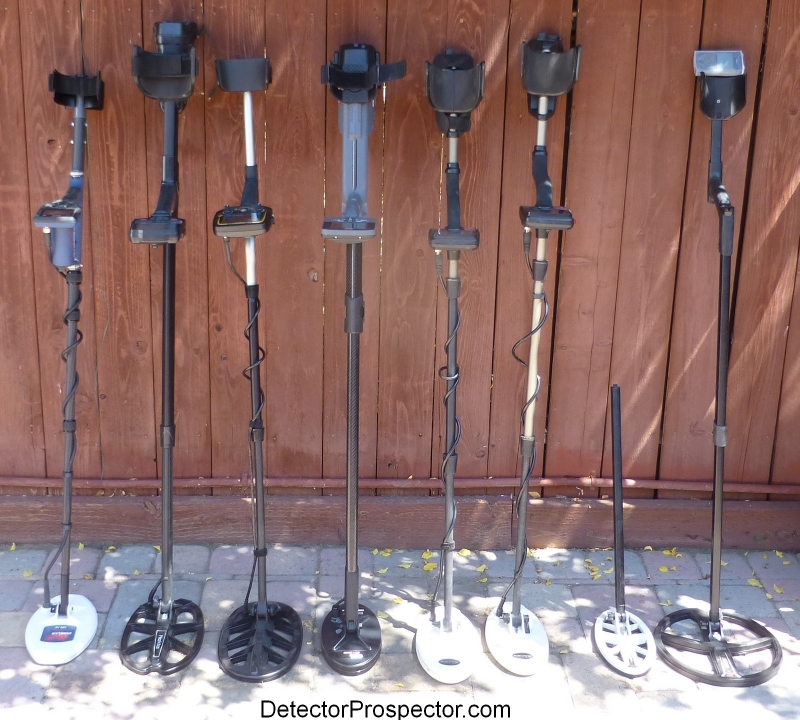
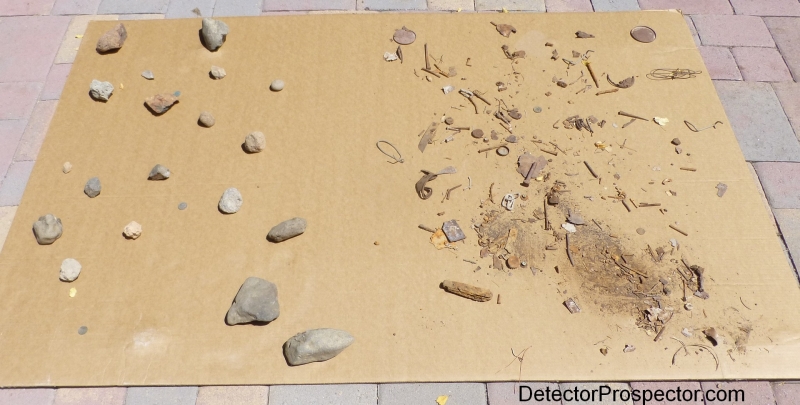
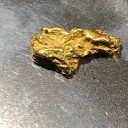

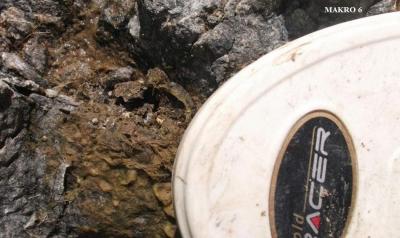
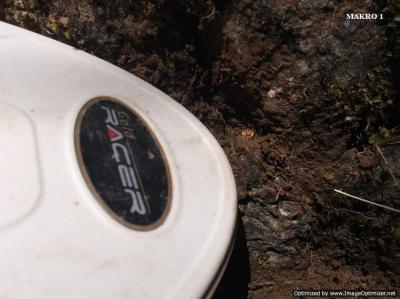
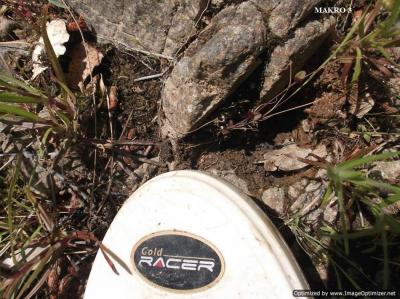
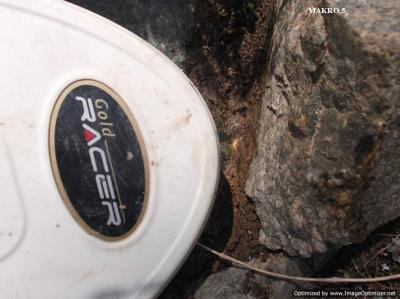
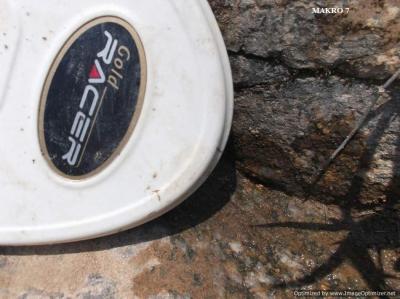
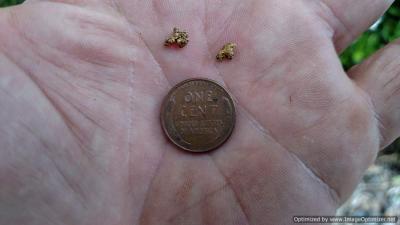
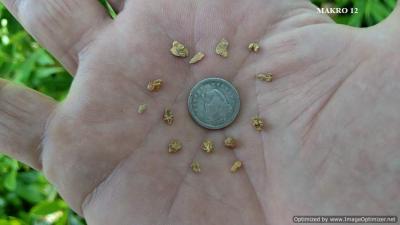
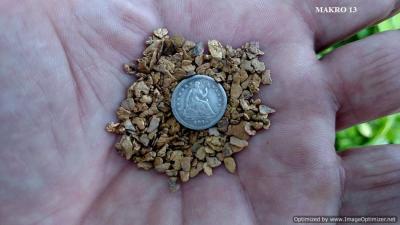
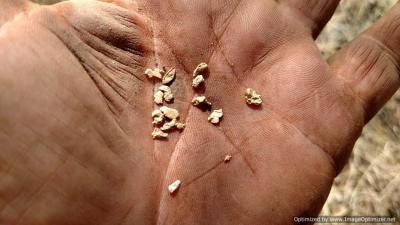
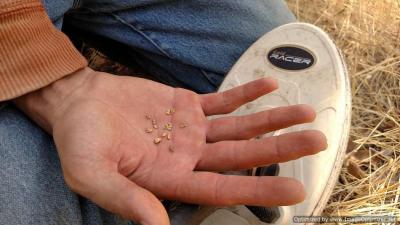
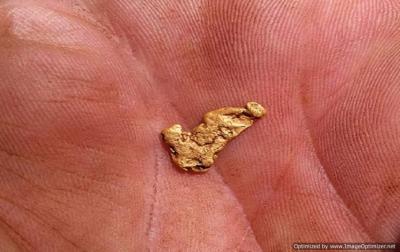
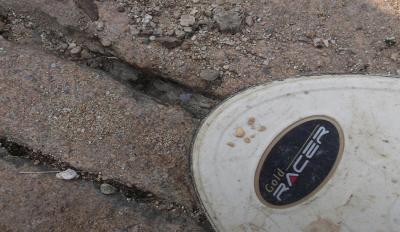
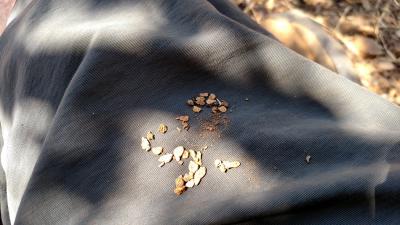
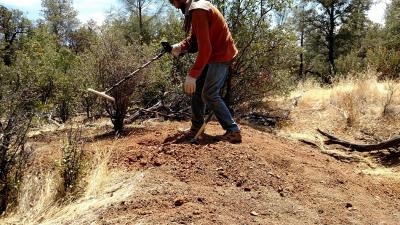
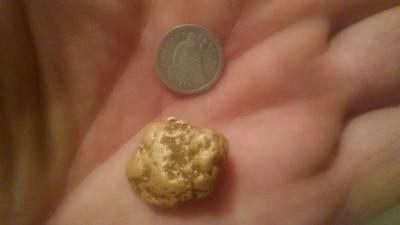


.thumb.jpg.77e4cb5bf39d44bdd2050d2edb7dfdb1.jpg)


